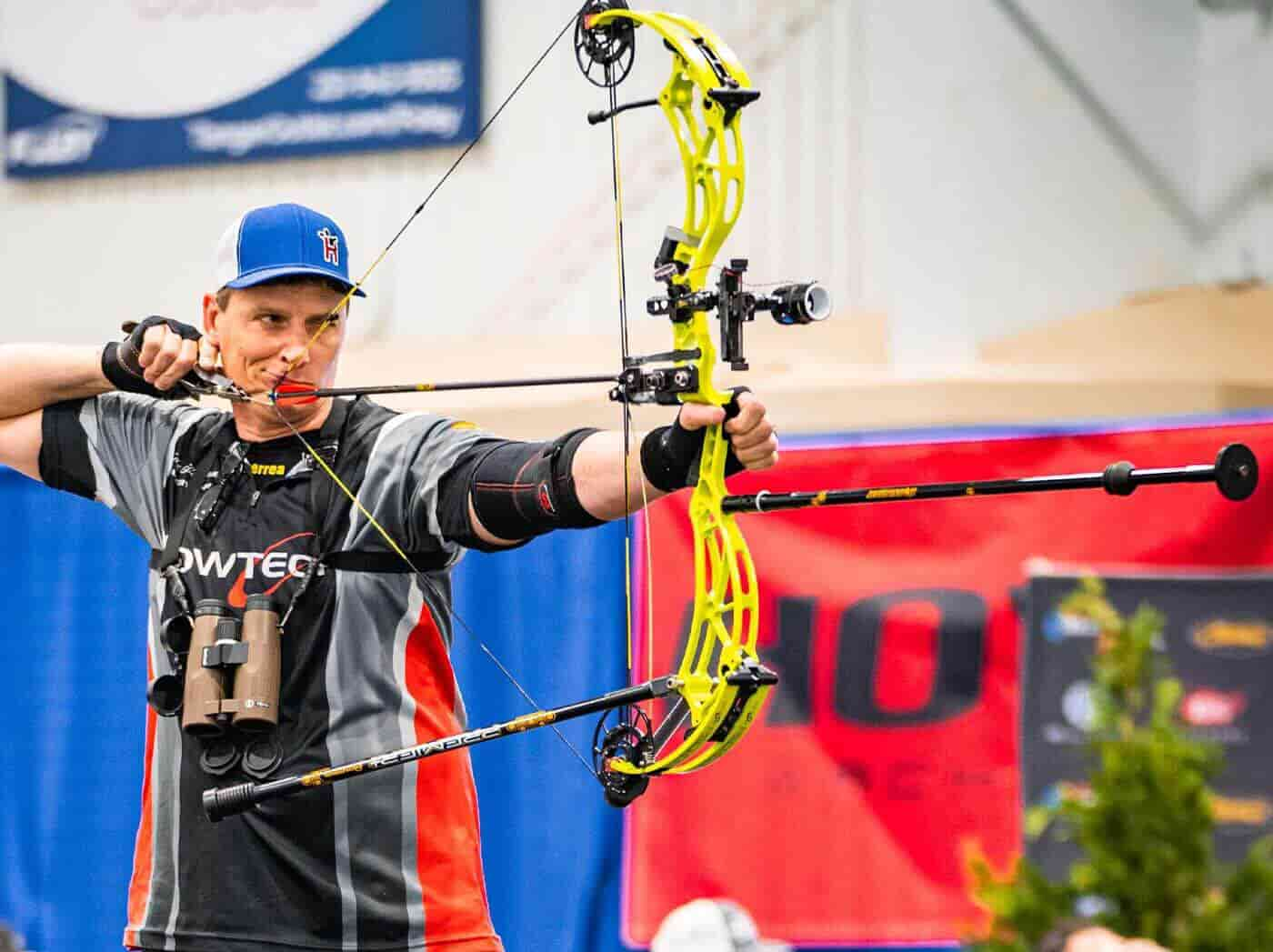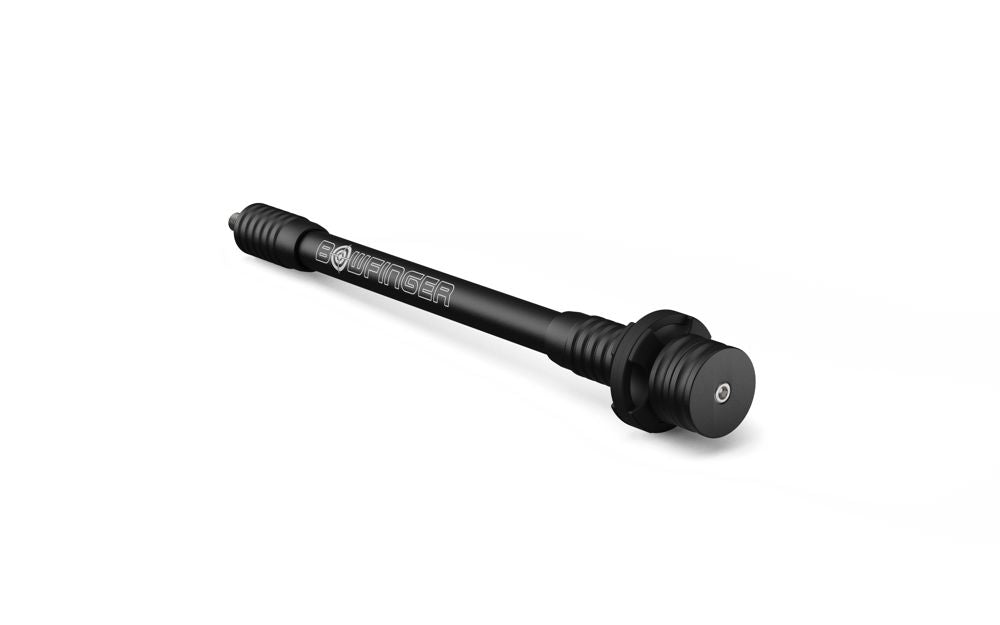Mastering Archery Stabilizers: A Full Overview for Beginners
Wiki Article
The Ultimate Guide to Choosing the Right Archery Stabilizer for Boosted Precision
Among the various devices offered, an archery stabilizer plays a considerable role in improving precision. In this comprehensive overview, we will certainly explore the key factors to take into consideration when choosing an archery stabilizer for enhanced accuracy. Whether you are a seasoned archer looking to update your devices or a beginner looking for assistance, join us on this journey as we unravel the secrets to selecting the ideal archery stabilizer.Size: Finding the Ideal Stabilizer Size
Figuring out the suitable stabilizer length is essential when picking an archery stabilizer for ideal efficiency. The length of a stabilizer directly affects the balance, security, and precision of the bow. A stabilizer that is also long can make the bow feel top-heavy and challenging to control, while a stabilizer that is too short might not provide sufficient security and dampening of resonances. Finding the appropriate length calls for considering aspects such as the archer's shooting design, bow weight, and individual choice.A longer stabilizer, generally varying from 8 to 12 inches, can give higher security and lower bow torque. This is especially valuable for archers who shoot with a high draw weight or those that tend to torque the bow during the shot. The added size assists to distribute the weight uniformly and counterbalance any torque or movement.
On the other hand, a shorter stabilizer, generally between 4 to 7 inches, uses a lot more ability to move and quicker feedback. It is favored by archers who shoot with a lower draw weight or those who need even more wheelchair, such as hunters or 3D shooters. The much shorter length enables less complicated activity with tight areas and faster adjustments.
Ultimately, the optimum stabilizer length is a matter of individual preference and shooting design. It is suggested to explore various lengths and observe the effects on security and accuracy. Consulting with experienced archers or specialists can also provide valuable understandings and suggestions.
Weight: Identifying the Appropriate Stabilizer Weight
After considering the optimum stabilizer length, the following crucial element to take into consideration when picking an archery stabilizer is identifying the ideal stabilizer weight - archery stabilizer. The weight of the stabilizer plays a vital duty in boosting accuracy and stability during the shotThe weight of the stabilizer affects the equilibrium and control of the bow. A heavier stabilizer can give enhanced security and control, especially for shooters with a tendency for irregular shots or unsteady hands. It assists to absorb the vibrations and recoil created by the bow, minimizing torque and lessening the result on the arrow's trip.
On the other hand, a lighter stabilizer enables a quicker and much more receptive bow. It can be helpful for shooters that focus on maneuverability and rate over security. Lighter stabilizers likewise minimize exhaustion during long shooting sessions or competitions.
To identify the suitable stabilizer weight for your requirements, it is very important to consider your shooting style, physical stamina, and bow setup. Explore different weights and observing the effect on your shooting efficiency is essential to locating the excellent equilibrium.
Ultimately, the optimum stabilizer weight will vary for each and every individual archer. It is recommended to start with a modest weight and make adjustments based on individual preference and capturing results. Bear in mind, the goal is to attain a stable and regulated shot, while also maintaining comfort and ease of usage.
Materials: Choosing the Right Products for Durability and Efficiency
When selecting an archery stabilizer, it is critical to thoroughly think about the materials utilized in its building and construction to guarantee durability and maximize efficiency. The option of materials can significantly impact the overall quality and effectiveness of the stabilizer.One of the most commonly utilized materials for stabilizers is carbon fiber. In addition, carbon fiber stabilizers are immune to temperature modifications and are less likely to warp or bend over time.
Another preferred product for stabilizers is aluminum. Aluminum stabilizers additionally use a wide range of personalization options, allowing archers to change the weight and length to suit their choices.
Some stabilizers are built utilizing a combination of products. A stabilizer may have a carbon fiber core wrapped in a light weight aluminum shell. This crossbreed design integrates the very best qualities of both materials, providing optimal security, sturdiness, and efficiency.
Layout: Understanding the Different Stabilizer Layouts and Their Impacts
Considering the products used in archery stabilizers, it is crucial to currently look into the different designs of stabilizers and their corresponding impacts. The design of an archery stabilizer plays a crucial role in improving precision and minimizing resonance throughout the shot. There are a number of different styles readily available in the market, each with its very own special attributes.
One more popular layout is the side bar stabilizer. This layout includes attaching a brief pole sideways of the bow, alongside the major lengthy pole. Side bar stabilizers assist in counterbalancing the weight of devices, such as quivers or views, and offer additional stability to the bow.
Some stabilizers come with flexible weights. These stabilizers permit archers to make improvements the equilibrium and feeling of their bows by adding or getting rid of weights. This feature is particularly beneficial for archers who favor a details weight distribution or want to try out different configurations.
Additionally, have a peek at these guys some stabilizers integrate dampening technology to minimize vibration and noise. These stabilizers typically have built-in dampeners or use products that soak up resonances, resulting in a smoother and quieter shot.

Accessories: Exploring Added Devices for Improved Security
To better boost stability in archery, extra accessories can be utilized. These accessories are developed to function in combination with the archery stabilizer to provide an also greater degree of stability and precision. One such device is the V-bar or the side stabilizer install. This device permits the add-on go of a second stabilizer, which aids to balance the bow and lower torque. By dispersing the weight uniformly on both sides of the bow, the V-bar aids to minimize any undesirable movement during the shot.An additional device that can boost stability is a bow sling. A bow sling is a band that affixes to the bow and allows the archer to maintain a relaxed grip on the bow manage without additional info the concern of dropping it (archery stabilizer). This relaxed grasp helps to lower muscle mass stress and enables a more stable and constant shot
Additionally, a stabilizer weight system can be made use of to adjust the equilibrium and security of the bow. These weight systems usually consist of little weights that can be added or gotten rid of from the stabilizer to readjust the balance point of the bow. By finding the ideal equilibrium point, archers can accomplish a much more stable and accurate shot.
Conclusion
In conclusion, choosing the right archery stabilizer entails thinking about aspects such as size, weight, materials, style, and additional devices. The optimal stabilizer length and weight will depend on private choices and shooting design.Determining the suitable stabilizer size is crucial when selecting an archery stabilizer for optimal performance. A stabilizer that is too long can make the bow really feel top-heavy and difficult to manage, while a stabilizer that is also short might not give adequate security and dampening of resonances - archery stabilizer.Taking into account the materials made use of in archery stabilizers, it is important to currently dig right into the various designs of stabilizers and their particular effects. Side bar stabilizers help in counteracting the weight of accessories, such as sights or quivers, and offer added stability to the bow
These weight systems usually are composed of small weights that can be included or eliminated from the stabilizer to readjust the balance point of the bow.
Report this wiki page